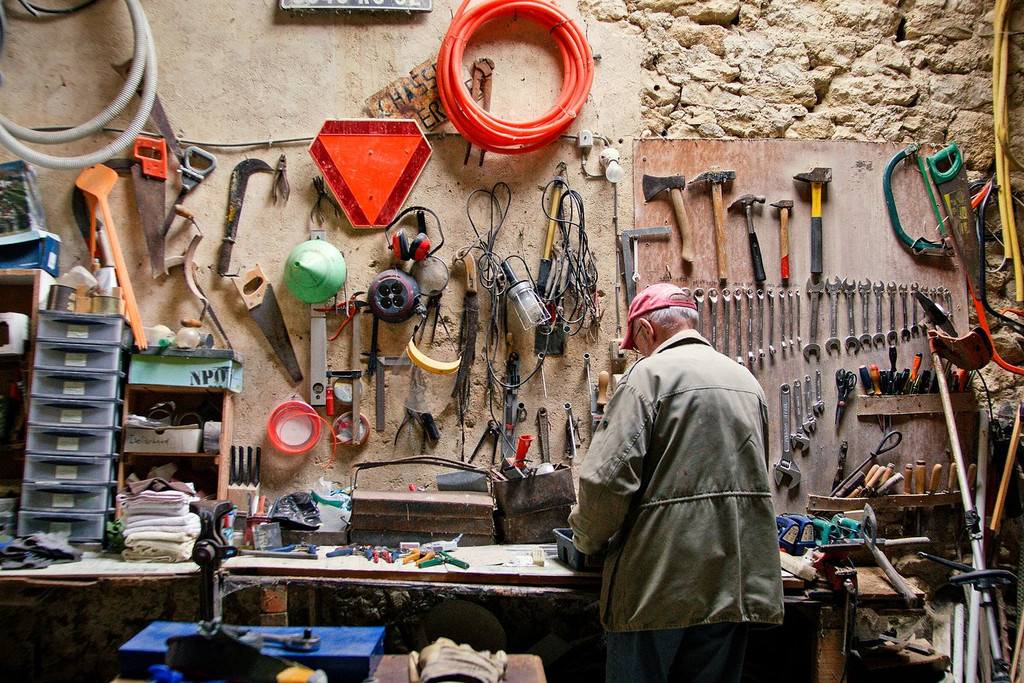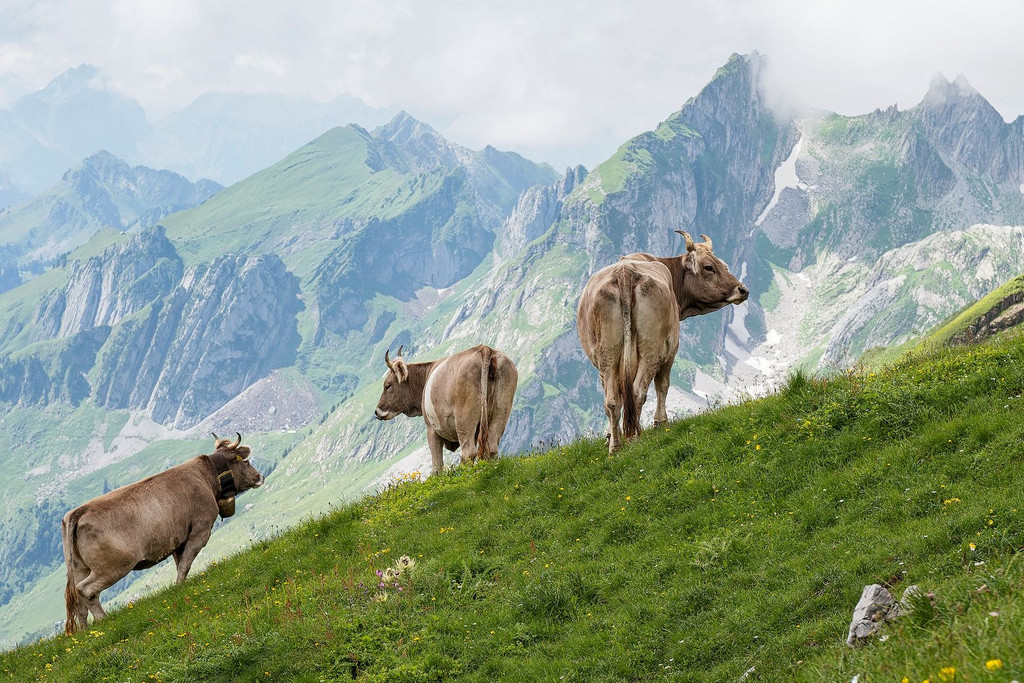This episode in film history could easily be overlooked at first glance and indeed was for some time – too long in fact. A priest collects films to show his protégés during religious education. That sounds kind of nice, but it is actually sensational. This Jesuit priest called Abbé Joye – who was born Joseph Alexis Joye in 1852 in the canton of Fribourg and later lived in Basel – collected hundreds of films over the years. His collection is today considered one of the world’s largest and most significant from the early days of cinema. “It is not a run-of-the-mill collection, it’s absolutely extraordinary,” remarks Mariann Lewinsky-Sträuli, a Swiss film historian specialising in silent movies. Articles and books suggest there are between 1,300 and 2,500 films. Most of them come from the period 1905 to 1912, while some date up to 1919. Abbé Joye gradually amassed the collection by buying films on the German second-hand market.
The genres include dramas, children’s films, fairytales, animation, war films and what are today called documentaries – “Country, nature, cityscapes and customs” was the label used in one catalogue listing. The films last between three and 15 minutes. Mariann Lewinsky supposes that the priest would have shown 10 to 15 films during a screening. There would have been a “specially selected programme” with “incredibly beautiful cinema covering a wealth of genres and a wide range of aesthetics, making it highly entertaining”.
Kissing scenes cut
There were no set venues then like those which exist today. Instead touring cinemas travelled from town to town continually showing the same films. In contrast, Abbé Joye showed new films in the same location, which represented a paradigm shift. He therefore needed a decent collection. Urban myth has it that he smuggled some films under his cassock from Germany to Basel. He is said to have cut kissing scenes or diverted the attention of children at these moments during screenings. We are not certain of these details now, over a century later. Lewinsky even doubts that he showed everything in his collection. This is because it also contained the decidedly anti-Catholic film “Les Martyrs de l’Inquisition” from 1905.
The Swiss film historian Roland Cosandey was the first person to document Joye’s story and works in the book “Welcome Home, Joye! Film um 1910”. In 1886, Joye was appointed a vicar and teacher of religious education in Basel. The Vinzentianum orphanage for boys was established several years later, which was called Borromäum from 1905. It was here in the room for Sunday school and religious studies that he showed his films. The priest started out with magic lantern projections, which were painted glass panels through which light was projected. He is believed to have produced thousands of them. According to Cosandey, he visited the first cinematographic projections at Basel’s Stadt-Casino around 1896. When Joye later took an interest in showing films himself from 1902, there was no stopping him.
Mariann Lewinsky-Sträuli has seen all of his films. To do so she had to travel from Zurich to Berkhamsted, a small town near London. This is where the originals as well as black-and-white copies produced in the UK have been kept since 1976 at the National Film and Television Archive of the British Film Institute. The entire collection almost fell into decay in Basel. After the priest’s death in 1919, his films continued to be regularly screened in the parish but there was clearly a lack of understanding of their sensitivity. In 1958, a Jesuit priest observed with horror that the nitrate films had been kept in an attic for years. A really safe place to keep the film collection could not be found over the following decades either in the canton of Basel-Stadt or anywhere else in Switzerland – not even at the Swiss Film Archive.
The Jesuit therefore arranged for them to be moved to Zurich for storage in the late 1950s and then to the current archive in the UK at the end of the 1970s. He was also the first person to catalogue all the films. However, in between the collection ended up in the hands of Davide Turconi in Italy during the 1960s. The film historian believed the films were virtually unsalvageable because they had rotted so much. He did something in good faith which turned out to be catastrophic in retrospect. He cut out individual squares to create picture documentation and later stuck the films back together again.
Still no colour copies
Joye’s slides are still kept at the Jesuit archive in Zurich. Around 200 film copies are in Italy. Everything else – in particular the originals on nitrate – is frozen at minus 4 to 5 degrees Celsius in the UK’s largest film archive. The archivist responsible, Bryony Dixon, confirmed that this protects them from further decay. There are around 1,200 films. So what now? Mariann Lewinsky made an application for Switzerland to have its own copies eight years ago for safekeeping and research purposes. The existing black-and-white copies are not the same as the originals as 80 % of the nitrate-based positives are in colour. New copies – whether analogue or digital – would have to be colour. But such a project would be extremely time-consuming and expensive. Trained staff would be required to scan and scientifically process the films. Lewinsky estimates that it would cost 4 million francs.
Anyone who comes across Joye’s collection recognises its importance and that it would be wonderful to have it in Switzerland. “It would be fantastic to have a project that would preserve the Joye films on restored film copies in saved colours for centuries to come and that would make them available to the general public,” says Beat Schneider, deputy director of the Stadtkino Basel. Esther Baur, the cantonal archivist, has also shown an interest: “The first step, however, would be to determine exactly what should and could be done with the collection.” Such a project would require broad support.
All the key questions would still need to be answered. Who would pay, who would carry out the work, and where would it be located? As Roland Cosandey points out, only a tiny proportion of the films can be classified as “Helvetica”, or, in other words, depict Swiss subjects. This could make it difficult to obtain Swiss funding. However, the collection as a whole could perhaps be interpreted as “Helvetica” due to the fact that it originated from Basel and its collector was Joye.
Lewinsky-Sträuli, who has saved a number of film collections in the past, says: “That is something which has not been dealt with in my view.” In an application, she wrote: “The collection uniquely documents not just the history of film production in its most dynamic stage of development but through it the world and culture of the age.” This would enable researchers to piece everything together, eliminate gaps in film history, obtain a better insight into the world at that time and much more besides.
Susanna Petrin is culture editor at “bz Basel”














Comments
Comments :
Petrin,
da gab es ja auch den Film von Isolde Marxer "A apropos de Joye"
den sie 1996, also bevor die Sammlung nach England ging in Basel realisierte.
Beste Grüsse
Reinhard Manz, Grenzach